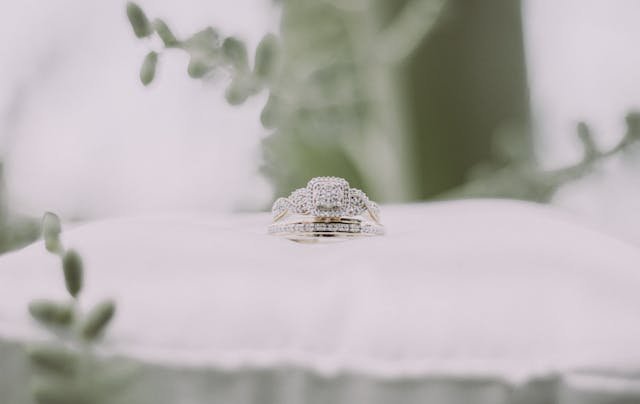
Engagement Ring Essentials: Diamonds, Gemstones, and Design
Photo from Pexels
Selecting an engagement ring is a significant decision, symbolizing a lifelong commitment. This process involves a thoughtful balance of aesthetic preferences, budget considerations, and personal values. While diamonds have long been the traditional choice, a growing number of couples are exploring alternative gemstones and unique designs. Understanding the various elements involved can help in creating a ring that perfectly captures the essence of your relationship. This guide delves into the essentials of diamonds, gemstones, and design to help you make an informed and inspired choice.
1. Understanding Diamond Quality
Diamond rings are celebrated for their brilliance and durability, making them a popular choice as engagement rings. The quality of a diamond is assessed based on the Four Cs: cut, color, clarity, and carat weight. The cut refers to how well the diamond has been shaped and faceted, impacting its sparkle. The most desirable stones are colorless; however, they may vary in hue from pale yellow to brown. Clarity is a measure of how many inclusions and flaws, either internal or external, are present. Large diamonds are both uncommon and costly due to their high carat weight.
2. Exploring Alternative Gemstones
While diamonds are timeless, alternative gemstones offer a unique and personalized touch with customised engagement rings. Sapphires, rubies, and emeralds are popular choices, each with its distinct color and symbolism. Sapphires, available in various colors, are known for their durability and regal history. Rubies symbolize passion and love, making them a fitting choice for an engagement ring. Emeralds, with their rich green hue, represent growth and harmony. Each gemstone brings a unique aesthetic and meaning, allowing couples to choose a stone that resonates with their story.
3. Choosing the Perfect Metal
The metal of the engagement ring band significantly influences its overall look and durability. Common choices include platinum, white gold, yellow gold, and rose gold, each offering unique benefits. Platinum is valued for its strength and hypoallergenic properties, making it an ideal choice for those with sensitive skin. White gold offers a sleek and modern look, while yellow gold exudes classic elegance. Rose gold has gained popularity for its romantic and vintage appeal. Whether you opt for white gold in an engagement ring or white gold wedding bands, it’s essential to select the metal that best suits your style and preferences. The choice of metal can also affect the setting’s style and how the gemstone appears, so it’s essential to consider these factors when selecting the band
4. Selecting the Right Setting
The setting of an engagement ring not only secures the gemstone but also enhances its beauty and style. Prong settings are popular for their ability to maximize the stone’s exposure to light, enhancing its sparkle. Bezel settings, which encircle the gemstone with metal, offer a sleek and secure option, particularly for active lifestyles. Halo settings surround the center stone with smaller diamonds, adding extra brilliance and the illusion of a larger stone. Pavé settings, where tiny diamonds are set into the band, create a continuous sparkle that complements the central gemstone. Each setting style offers a distinct look and level of security, so it’s important to choose one that aligns with both aesthetic and practical preferences.
5. Incorporating Personal Touches
Incorporating personal touches into engagement rings can transform a beautiful piece of jewelry into a deeply meaningful symbol of love. Custom engagement rings offer the perfect opportunity to infuse individuality and significance into the design. From selecting unique gemstones to engraving special messages, these personalized elements make the ring truly one-of-a-kind. Working with a jeweler to create personalized engagement ring allows couples to express their unique story and preferences through every detail. This thoughtful approach ensures that the ring not only dazzles but also holds sentimental value that will be cherished for a lifetime.
6. Balancing Style and Practicality
When designing an engagement ring, balancing style with practicality is essential to ensure long-term wearability. Consider the recipient’s lifestyle and daily activities when choosing the ring’s design and materials. For instance, a more durable metal and secure setting might be preferable for someone with an active lifestyle. Similarly, selecting a gemstone with a high hardness rating, such as a diamond or sapphire, can help ensure the ring withstands daily wear. The ring should not only be beautiful but also comfortable and suitable for everyday use.
7. Working with a Reputable Jeweler
Choosing a reputable jeweler is crucial in the process of designing or selecting an engagement ring. Look for jewelers with positive reviews, certifications, and a solid reputation in the industry. A skilled jeweler can provide valuable guidance on selecting high-quality materials and achieving the desired design. They can also offer custom design services, allowing you to create a truly unique ring. Establishing a trusting relationship with your jeweler ensures a smooth and satisfying experience from concept to creation.
Conclusion:
Designing an engagement ring involves thoughtful consideration of diamonds, gemstones, metal choices, settings, and personal touches. By understanding the qualities and options available, you can create a ring that is both beautiful and meaningful. Balancing aesthetic preferences with practical needs ensures the ring will be cherished for years to come. Working with a reputable jeweler provides the expertise and support needed to bring your vision to life. Ultimately, the perfect engagement ring is a timeless symbol of love and commitment, reflecting the unique bond between two people.
